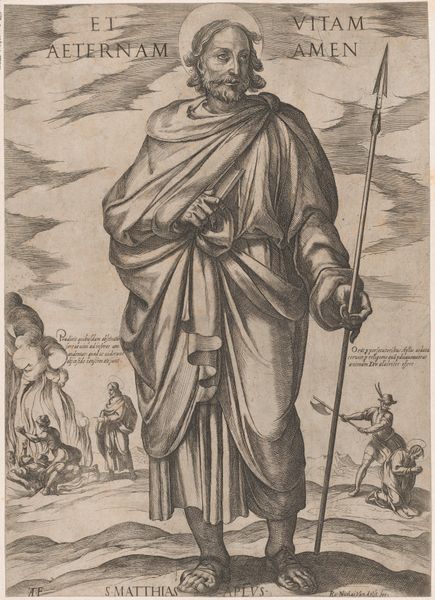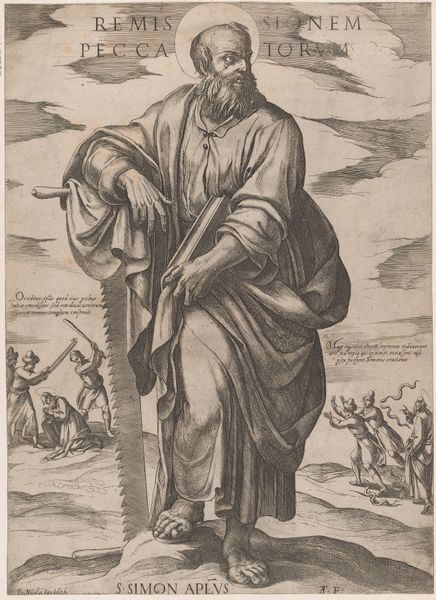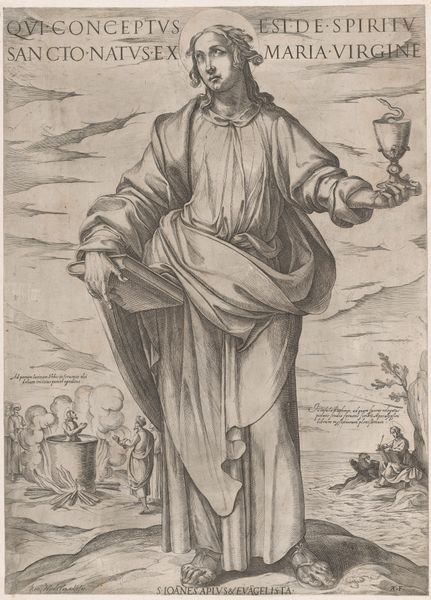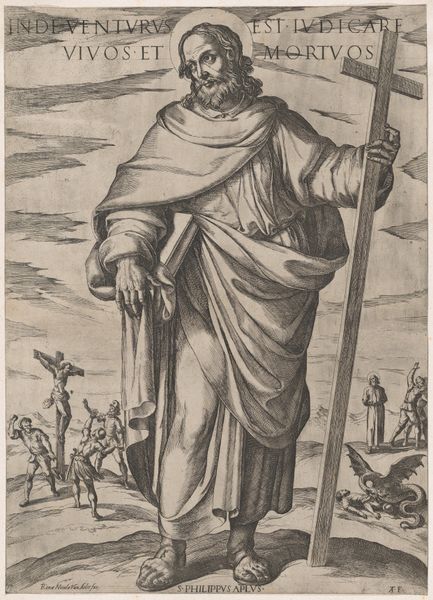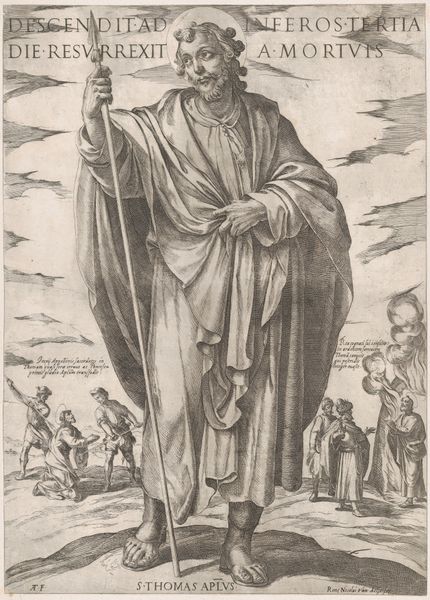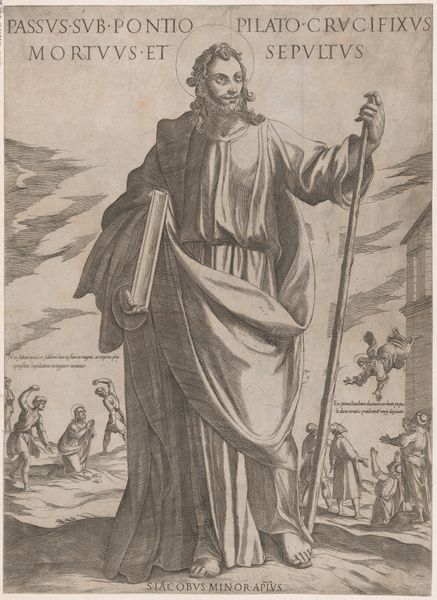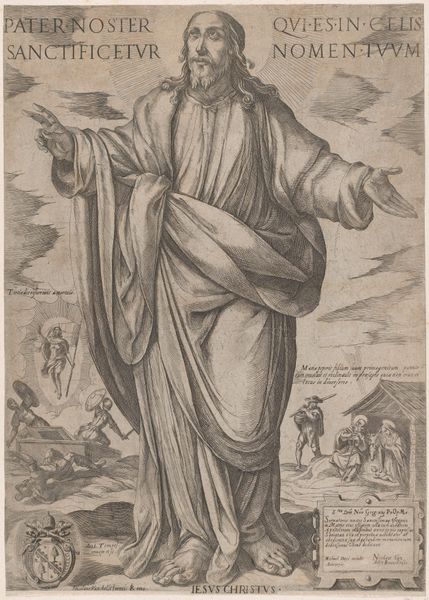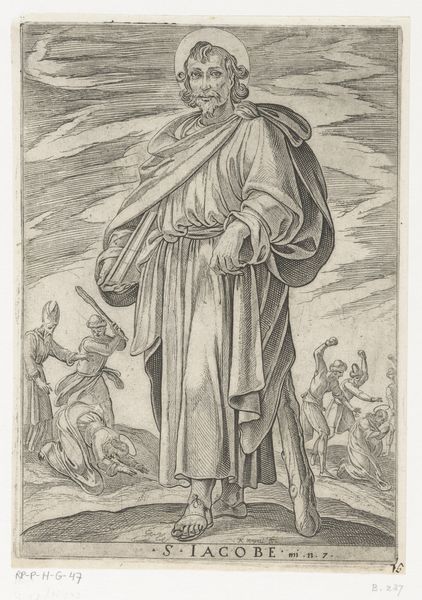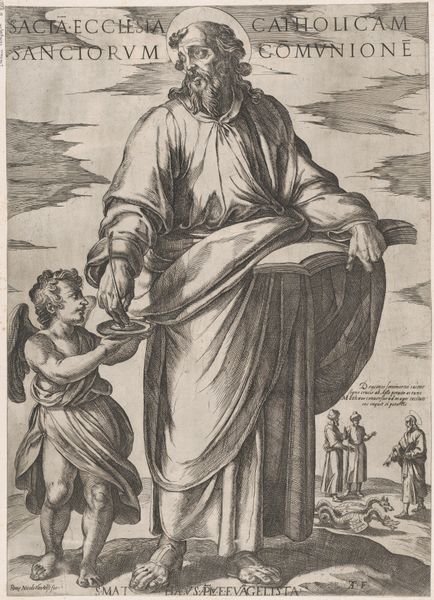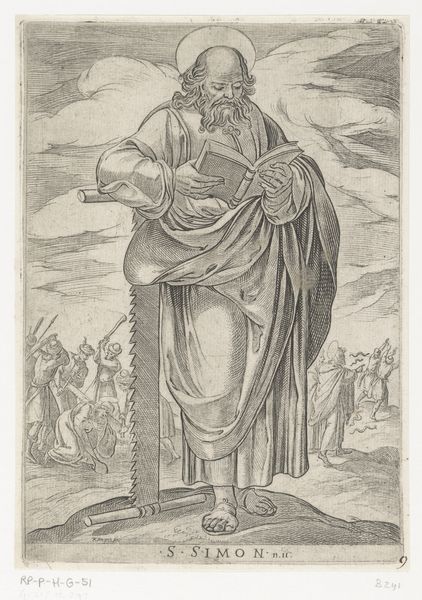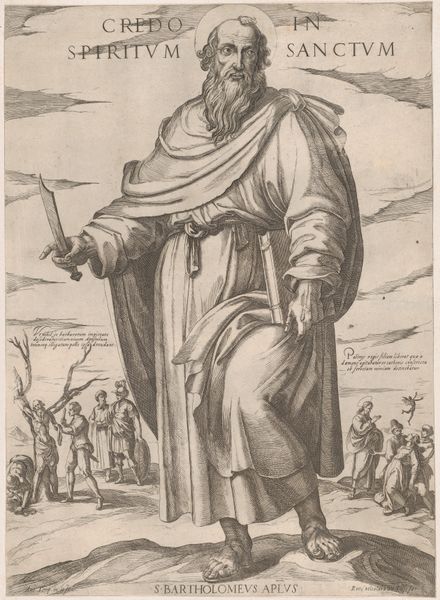
St. Judas Thaddeus from 'Christ, Mary, and the Apostles' 1555 - 1630
0:00
0:00
drawing, print, engraving
#
portrait
#
drawing
#
baroque
# print
#
figuration
#
line
#
portrait drawing
#
history-painting
#
engraving
Dimensions: Sheet: 20 1/2 × 14 7/8 in. (52 × 37.8 cm)
Copyright: Public Domain
Editor: This is Antonio Tempesta's engraving, "St. Judas Thaddeus from 'Christ, Mary, and the Apostles,'" created sometime between 1555 and 1630. It's quite detailed, but what really strikes me is the contrast between the large figure of St. Judas and the much smaller scenes depicted around him. What’s your interpretation of this work? Curator: I see this engraving as a potent illustration of the production and dissemination of religious ideology during the late Renaissance. Consider Tempesta's process: engraving allowed for multiple reproductions, democratizing access to religious imagery. The linear style, while aesthetically driven, also speaks to the technical demands of printmaking and the skilled labor involved. Notice how the line dictates form, belief and therefore potentially behaviour. What social function would such imagery play? Editor: So, you're focusing on how the artwork's creation and distribution affected its meaning? The prints enabled religion, but I see them as aesthetically flat as consequence. Curator: Precisely. And it's not merely about "meaning," but also about function. Engravings like this were commodities within a market for religious goods. The material, the labor, the distribution networks – all these elements are implicated in understanding its purpose. Look closer, what elements of the visual are prioritized? Editor: I hadn’t really considered it that way. So, focusing on the materials and the production process actually reveals a lot about the broader social context? Is there more for how Tempesta would have wanted this to function within social classes of the time? Curator: Exactly! By emphasizing production, we challenge the traditional view of art as purely aesthetic or divinely inspired. We reveal it as a product of human labor and social forces. It can allow more individuals access and in other circles, such processes may limit consumption. It forces a conversation around material access and labour! Editor: That’s fascinating; it really changes how I see art. Thanks! Curator: My pleasure. Looking closely can challenge and shift how we value the piece.
Comments
No comments
Be the first to comment and join the conversation on the ultimate creative platform.

